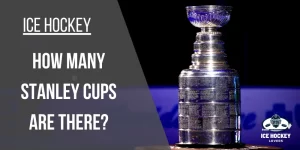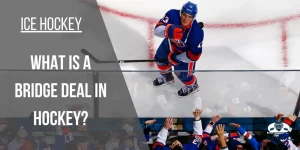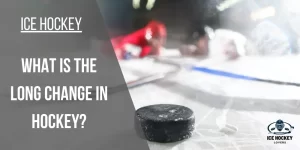Goalie Trapezoid: What is the Trapezoid in Hockey?
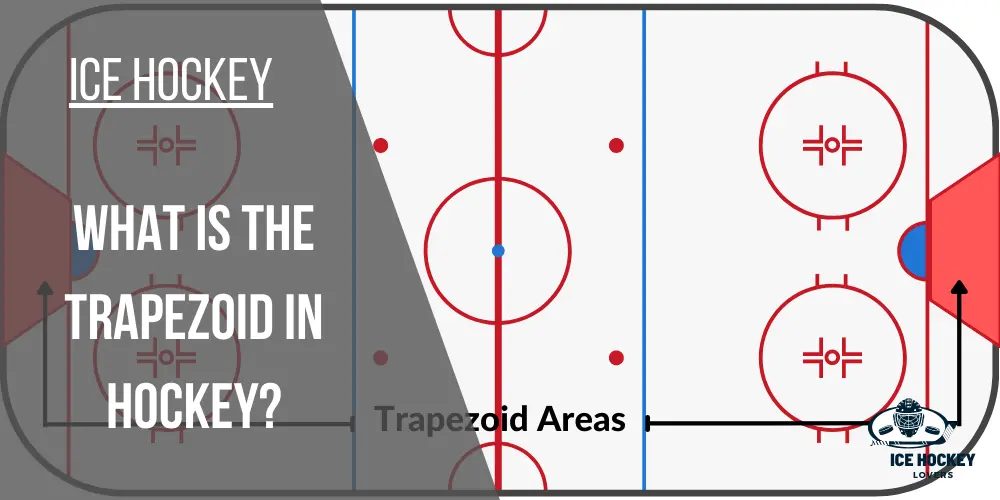
As a person who likes and follows ice hockey, you will know that the ice rink has many blue and red lines; why are they on the rink? And what are its features? How do these lines help players?
So, what is a hockey trapezoid? The area behind each goal net on the rink is in a trapezoid shape where the goalkeeper can go and play the puck, called trapezoid. However, playing the puck in the trapezoid has some restrictions that the goalie needs to follow. If the goalie starts skating on the other side of the red line, called the goal line, he must face a penalty of two minutes for a minor aspect.
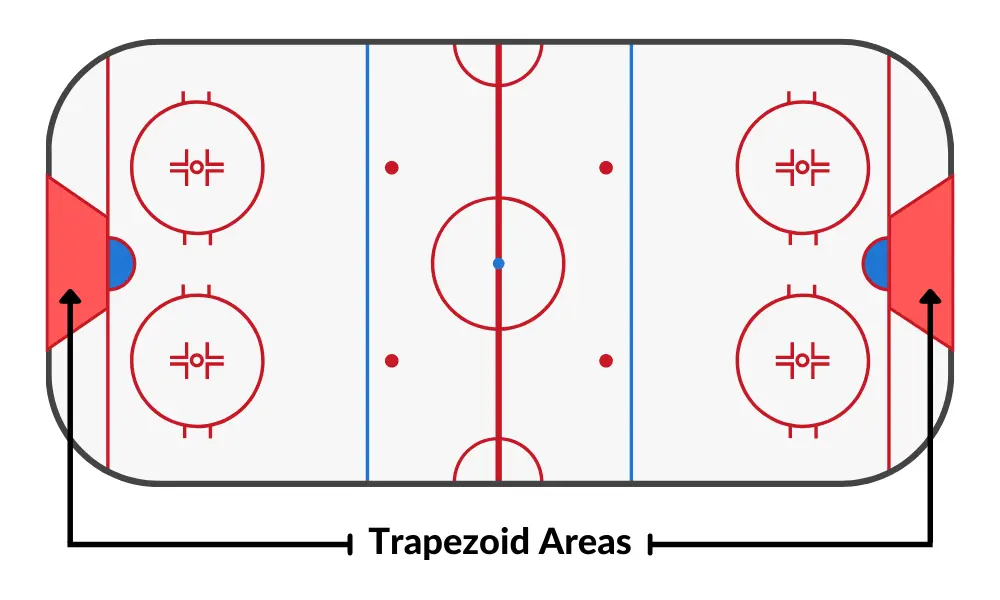
In the figure above, the shaded portion of the ice rick is the area where the goalie can play the puck according to the rules, but the area that is not shown to be shaded is the one that will cause a minor penalty of two minutes to the goalie if he skates out there. This unshaded area is called the trapezoid in ice hockey, a prohibited area for the goalie.
Table of Contents
History of the trapezoid in hockey
Till 1980’s the ice hockey was all about scoring high in the matches, and the teams had many veteran players who used to score high because of their talent.
But the players’ skills in the 1900s suffered a steep downfall, and they started to overcome the talented players by doing a solid defense. This was called the neutral trap zone. In this zone, the defense used to be very strict that the opposing teams could not score much in the games, resulting in the “Dead puck Era“.
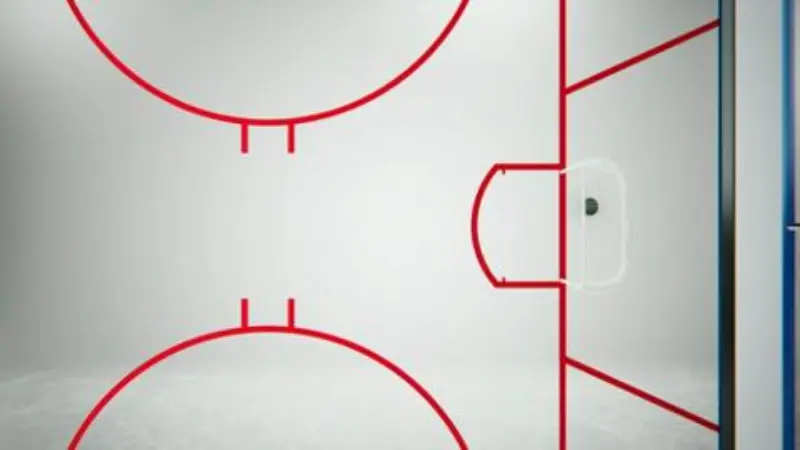
In that era, it was usual for the games to be low scoring, and it also suffered a lack of interest from the fans. The weak team used to take advantage of any minor weakness of the strong team and will use it for its benefit. All this misery made the scoring rate drop by thirty to forty percent, and the era lasted till the start of the 2000s.
At the beginning of the 2000s, around 2005, the national hockey league revised its rule book for better offense in the match and to increase the scoring rate in the games. Among many rules that get manipulated, there was also the addition of trapezoids in the ice rink.
Trapezoid increase offense
We know that the goalie was allowed to play the puck, so the defense in the match increased. Thus, the freedom of playing the puck resulted in developing the habit of goalies playing mostly outside their crease.
But when the goalie is prohibited in the trapezoid area of the rink, it becomes easy for the offense-man to shoot the puck from the trapezoid, and he can also get hold of the puck from the corner of the crease when needed. Thus, limiting the goalie’s action and movement in the trapezoid will surely increase the team’s offense in a match.
The Martin Brodeur Rule
The trapezoid rule is also termed The Martin Brodeur Rule. And why his name called the rule is explained as; Brodeur, M., who has been the champion twice for the Stanley Cup and is known in the Hall of Fame of hockey as the best goalie of all time. He had a match with New Jersey’s devils, again the best team of the dead puck era.
During their game, Brodeur gave the devils a perfect match. If he did not catch the puck in the corners of the net, then there were chances that the Devils would take advantage of his mistakes.
Trapezoid dimensions
The trapezoid lines start from the two goal line points, which are 6 feet away from each side of the net. Then these lines go to the end of boards where both lines are 28 feet away from each other.
This restricted trapezoid area limits the area behind the net where a goalie can play. Goalies can go outside the trapezoid if another player is inside the trapezoid while he is playing and controlling the puck. Then there will be no penalty on the goalie.
Does trapezoid increase score?
It is not clear that the rule of a trapezoid has increased the overall score in the match after its implementation. But we can say that with all the rules adopted in the session 2005-2006 hockey matches, the score increased to some extent. Overall, the revised regulations led the team to more exciting games with a good team onboard.
Conspiracy about trapezoid
There was also some conspiracy about the trapezoid, and people got their disagreement about the new rule. Some of them are listed as follows:
- It will create confusion for the spectaculars: more lines in the rink will confuse the fans, and they will not understand the new rules easily. It was the very first objection to a trapezoid.
- Goalies cannot handle their sticks properly: not every goalie is a pro in handling their stick to play the puck. Thus, it will be embarrassing for the goalie to lose the puck while out skating to prevent a goal. His morale will damage.
- Defensemen might get injured: if the goalie is chasing the puck outside his crease, it is more likely that he will get bumped into any defensemen chasing the puck. So, this rule will cause more chances of defensemen getting injuries more often.
- There will be a typical dump and chase scenario: hockey looks fantastic when the players shoot a puck, then go after it to retrieve it. But in the case of the trapezoid in the rink, the players will hit the puck and rush to the corners to retrieve it just because the goalie cannot enter that corner. Does it make any logic other than a dump-and-chase trick? It was another disagreement on the trapezoid in the rink.
Frequently Asked Questions
Is there a penalty for a goalie to play the puck outside the trapezoid?
Yes, there is a minor penalty. If a goalie plays the puck outside the trapezoid, the referee gives a signal for a game-delay minor penalty.
Does a goalie serve the penalty for playing outside of the trapezoid?
No, a goalie does not sit in the penalty box to serve the penalty. Instead, another player in their team will sit in the penalty box for 2-minutes to serve the penalty. And the opposing team will have a one-man advantage over the penalty team for a short period of two minutes.
Conclusion
To summarize, I will say that the trapezoid in hockey was instructed, keeping in view many critical issues and benefits. Undoubtedly, it created better offense between the teams and helped increase the percentage of scores in the matches.
Every good change always faces some criticism initially, but at one point, people get the idea clear; the same happened with the trapezoid. This blog perfectly describes the trapezoid in hock, its history, and its different terminologies. The fun fact is that this blog also covers controversies against the trapezoid. So, you will like it!
Related Posts:

Who is Austin Taylor?
Meet Austin Taylor, your go-to source for everything ice hockey! With a passion for the sport that’s as deep as the ice itself, Austin Taylor brings you concise, expert insights and nitty-gritty details on all things hockey. From gear reviews to strategy breakdowns, Austin Taylor is your trusted guide to navigating the exhilarating world of ice hockey. Get ready to lace up your skates and dive into the game with Austin Taylor as your ultimate companion.

